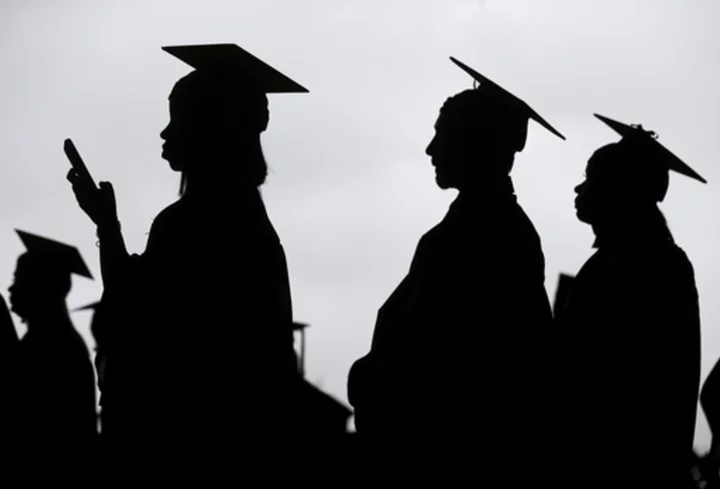In 2022, I left the teaching profession, convinced that the public service loan forgiveness (PSLF) I had been pursuing for the past 14 years was no longer a possibility. When I changed careers, I had nearly $50,000 in student loan debt.
But in 2023, my loan servicer informed me that almost $40,000 of that balance had been forgiven.
This surprising reversal happened because a limited PSLF waiver temporarily gave borrowers credit for payments toward loan forgiveness that normally wouldn’t count toward PSLF — and waived the requirement that borrowers must work in public service at the time of application and forgiveness.
The bad news: The waiver that helped me get loan forgiveness expired Oct. 31, 2022.
The good news, according to Abby Shafroth, director of the Student Loan Borrower Assistance Project at the National Consumer Law Center: “If you didn’t already take advantage of the limited waiver … there’s still time to receive almost the same benefits,” which may lead to loan cancellation for some borrowers.
Here’s how.
TAKE ADVANTAGE OF RULE CHANGES
Millions of borrowers will see their payment counts toward forgiveness increase through a one-time adjustment that’ll be applied to accounts in waves from July 2023 through sometime in 2024. According to the U.S. Department of Education, the adjustment isn’t tied to public service and applies to borrowers with a Direct Loan or Federal Family Education Loan (FFEL), including Parent PLUS loans, and gives credit toward PSLF or income-driven repayment (IDR) loan forgiveness for:
— Any month in which a borrower was in a repayment status, regardless of whether payments were partial or late, the loan type or the repayment plan.
— Any month in which loans were in an eligible repayment, deferment or forbearance status prior to consolidation.
— Months while a borrower spent at least 12 consecutive or 36 cumulative months in forbearance.
— Any month spent in deferment (except in-school deferment) prior to 2013.
Borrowers in the PSLF program or who have ever been enrolled in a payment plan don’t need to do anything to receive the adjustment. But if you’re aiming for PSLF, you may need to submit an employment certification form to ensure that months worked in public service count toward the required 120 total payments. Borrowers who don’t qualify for PSLF need 240 or 300 qualifying payments to get forgiveness, depending on the type of loans.
“We recommend submitting a PSLF form every year and every time you switch jobs to make sure your payment count is updated,” says Amy Czulada, outreach and advocacy manager at the Student Borrower Protection Center.
Borrowers who have a commercially managed FFEL, Perkins or Health Education Assistance Loan (HEAL) must apply for a Direct Consolidation Loan by Dec. 31, 2023, to receive the one-time adjustment. Check your loan type and apply for consolidation at studentaid.gov.
BE PREPARED TO PUSH BACK
After submitting my PSLF application, I received periodic correspondence from Mohela, my loan servicer, with updated payment counts. By December 2022, I had 66 qualifying payments; a month later, I had 91. Finally, in May 2023, I passed the 120-payment threshold on two loans and was notified that those balances were forgiven.
But getting across the finish line required self-advocacy. When I noticed that some of my employment hadn’t been approved — even though I correctly filled out my PSLF application — I called Mohela and asked a loan counselor to reevaluate my PSLF form and update payment counts accordingly.
“Don’t assume that everything (on the loan servicer’s end) is correct,” says Shafroth. “If something seems wrong, you should feel empowered to say something.”
These tips can help you work with your loan servicer:
— Be prepared. Before speaking with a loan counselor, gather information like payment counts, paperwork submission dates and loan amounts.
— Keep detailed records. Save all correspondence and take notes during phone calls.
— Be knowledgeable. Review the loan forgiveness rules so you can reference them when needed.
INCLUDE PANDEMIC FORBEARANCE MONTHS
When calculating the number of eligible payments you’ve made toward PSLF or IDR forgiveness, remember to add at least 36 to account for the duration of the COVID-19 payment pause. This time counts even if you didn’t make any payments.
Borrowers in the PSLF program must certify any period of public service employment that coincided with the payment pause to get credit for these months. Remember, too, that borrowers only qualify for PSLF if they work in public service at the time of application (that waiver expired in 2022).
Those who don’t qualify for PSLF or IDR forgiveness after the adjustment need to enroll in an income-driven repayment plan to make sure any subsequent months count.
Czulada says borrowers who have been in repayment the longest can expect to have their payment counts updated first. Account audits will continue every two months starting in July 2023.
If your loan servicer reports a count that seems inaccurate, Shafroth recommends trying to resolve the issue with them first. Request a payment history from the servicer and compare it against your own records. Ask to speak to a supervisor, if needed. As a last resort, you may file a complaint with the FSA’s Ombudsman Group.
_______________________
Jae Bratton is a writer at NerdWallet. Email: jbratton@nerdwallet.com.
RELATED LINKS:
IDR Account Adjustment https://studentaid.gov/announcements-events/idr-account-adjustment
Federal Student Aid Ombudsman Group https://studentaid.gov/feedback-ombudsman/disputes/prepare

